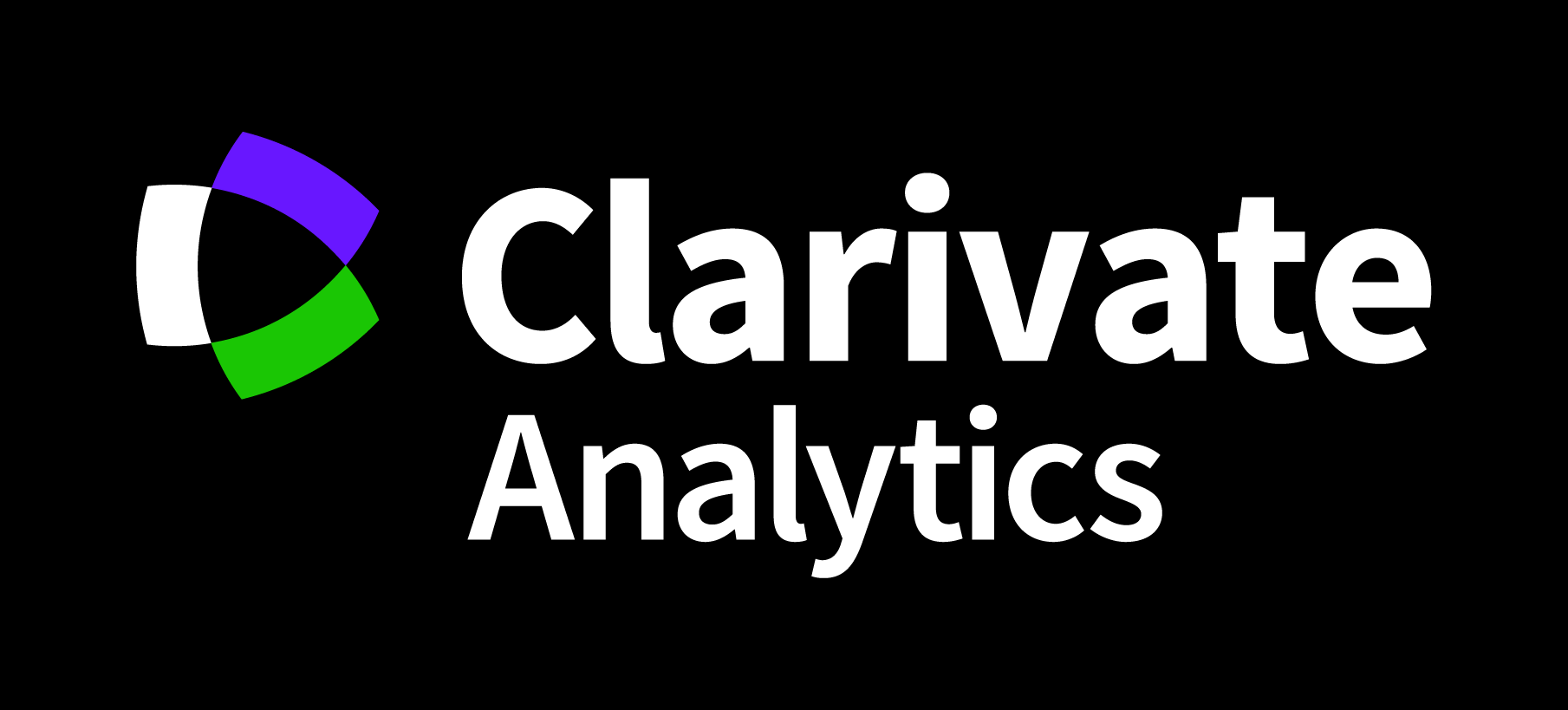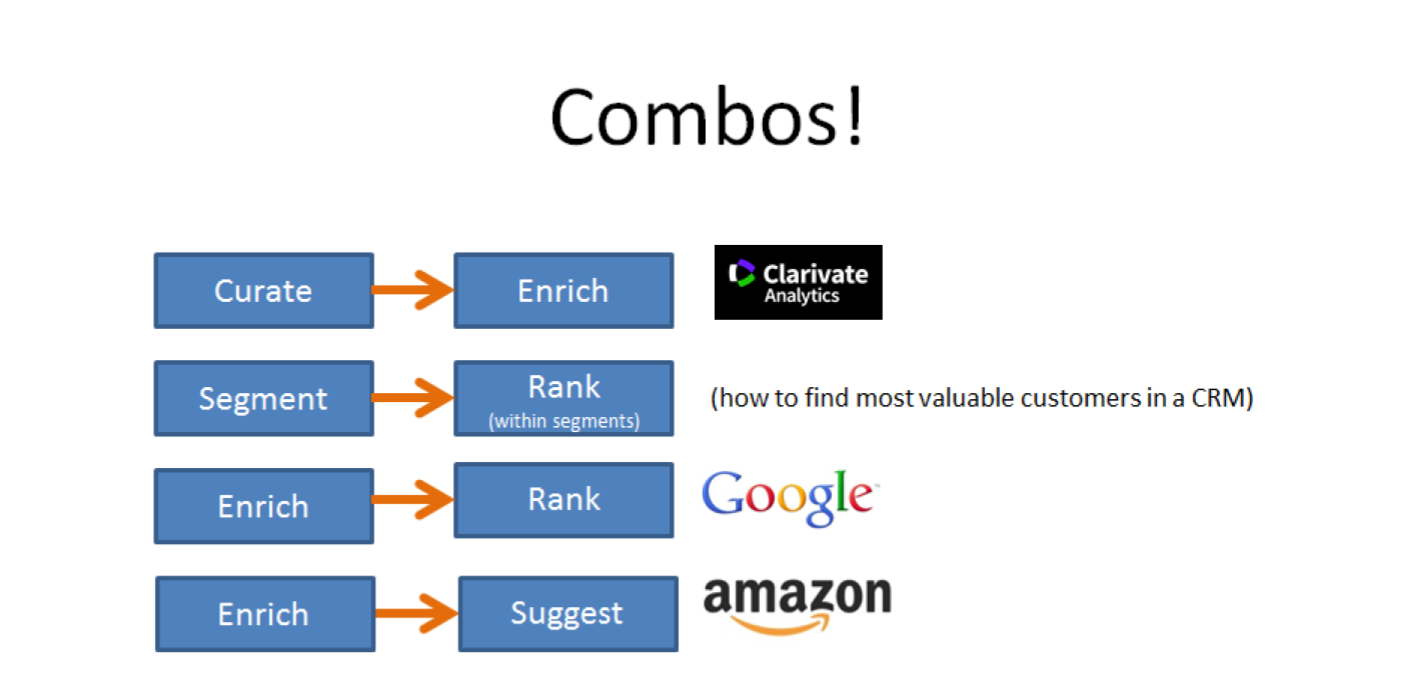Seven roads to data-driven value creation
2017-09-10
last modified: 2022-12-16
== !

Tip | Not a closed list, not a recipe! Rather, these are essential building blocks for a strategy of value creation based on data. |
1. Predict

a. Examples of companies
Predicting crime

Predicting deals

Predictive maintenance

b. Obstacles and difficulties
Risk missing the long tail, algorithmic discrimination, stereotyping
Neglect of novelty
2. Suggest

a. Examples of companies
Amazon’s product recommendation system

Google’s “Related searches…”

Retailer’s personalized recommendations

b. Obstacles and difficulties
The cold start problem, managing serendipity and filter bubble effects.
Finding the value proposition which goes beyond the simple “you purchased this, you’ll like that”
3. Curate

a. Examples of companies
Clarivate Analytics curating metadata from scientific publishing

Nielsen and IRI curating and selling retail data


ImDB curating and selling movie data

NomadList providing practical info on global cities for nomad workers

b. Obstacles and difficulties
Slow progress: curation needs human labor to insure high accuracy, it does not scale the way a computerized process would.
Must maintain continuity: missing a single year or month hurts the value of the overall dataset.
Scaling up / right incentives for the workforce: the workforce doing the digital labor of curation should be paid fairly, which is not the case yet.
Quality control
4. Enrich

Examples of companies
Selling methods and tools to enrich datasets

Selling aggregated indicators

Selling credit scores
Obstacles and difficulties
Knowing which cocktail of data is valued by the market
Limit duplicability
Establish legitimacy
5. Rank / match / compare

Examples of companies
Search engines ranking results

Yelp, Tripadvisor, etc… which rank places

Any system that needs to filter out best quality entities among a crowd of candidates
Obstacles and difficulties
Finding emergent, implicit attributes (imagine: if you rank things based on just one public feature: not interesting nor valuable)
Insuring consistency of the ranking (many rankings are less straightforward than they appear)
Avoid gaming of the system by the users (for instance, companies try to play Google’s ranking of search results at their advantage)
6. Segment / classify

Examples of companies
Tools for discovery / exploratory analysis by segmentation
Diagnostic tools (spam or not? buy, hold or sell? healthy or not?)

Obstacles and difficulties
Evaluating the quality of the comparison
Dealing with boundary cases
Choosing between a pre-determined number of segments (like in the k-means) or letting the number of segments emerge
7. Generate / synthesize (experimental!)

Examples of companies
Intelligent BI with Aiden

wit.ai, the chatbot by FB



Close-to-real-life speech synthesis

Generating realistic car models from a few parameters by Autodesk

Generating summaries and comments from financial reports Yseop

A video on the generation of car models by Autodesk:
Obstacles and difficulties
Should not create a failed product / false expectations
Both classic (think of
 ) and frontier science: not sure where it’s going
) and frontier science: not sure where it’s going
Combos

The end
Find references for this lesson, and other lessons, here.
 This course is made by Clement Levallois.
This course is made by Clement Levallois.
Discover my other courses in data / tech for business: https://www.clementlevallois.net
Or get in touch via Twitter: @seinecle r business: https://www.clementlevallois.net
Or get in touch via Twitter: @seinecle r business: https://www.clementlevallois.net
Or get in touch via Twitter: @seinecle r business: https://www.clementlevallois.net
Or get in touch via Twitter: @seinecle @seinecle get in touch via Twitter: @seinecle get in touch via Twitter: @seinecle get in touch via Twitter: @seinecle get in touch via Twitter: @seinecle get in touch via Twitter: @seinecle get in touch via Twitter: @seinecle get in touch via Twitter: @seinecle get in touch via Twitter: @seinecle get in touch via Twitter: @seinecle